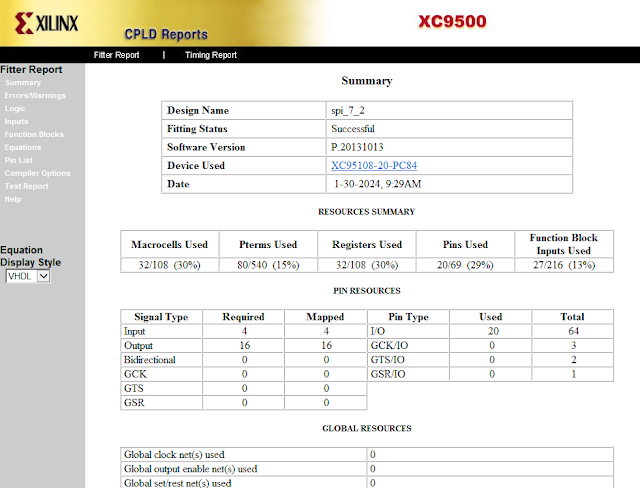A parallel to serial shift register is useful for microprocessor digital inputs extending. For instant a keypad input for printer for photocopier machine. There are many off-the-shelf parallel to serial shift register chips, especially the SN74HC165.
 |
| Hardware Testing |
Using a programmable logic device we can design this kind of chip with customizable operations, and the numbers of I/O. This job could be done with a CPLD chip and its design tool, VHLD, Verilog code, or even schematic design tool.
 |
| Running Arduino Program and the XC95108 |
In this example, I use an XC95108 CPLD to design a parallel to serial converter chip. VHDL code is preferred for this design. This design contains,
- Clock (CLK) input,
- LOAD input to latch data from an 8-bit digital input to the internal register,
- Serial Data Out (DOUT) that shift data serially at the rising edge of input clock,
- Digital Input (D) is an 8-bit data input.
The overall process requires 9 clock cycles. At the first clock, data will be read and latched into an internal register, then the 8-bit serial data shifting out will be processed.
You can use the FloorPlan I/O tool in the ISE Design Suite to assign its I/O pins. On the XC95108 CPLD Prototype Board, I set the I/O as follow.
The Arduino is very popular for most of electronics projects. I use an Arduino Uno to read the data from this chip.
Click here to download this example.


